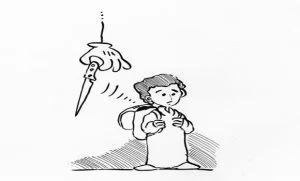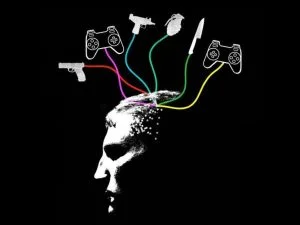Violence is a global problem that knows no bounds. It can affect anyone, anywhere, at any time. In the U.S., one in four women and one in six men will experience violence at the hands of an intimate partner in their lifetime. Furthermore, worldwide, an estimated 35% of women have experienced physical or sexual violence perpetrated by someone other than their intimate partner. Evidently, this is a serious issue that must be addressed. In this blog post, we will explore the concept of violent tendencies, their types, effects. Later in this blog post, we will give tips for coping with them.
Contents
Understanding Violent Tendencies

Violent tendencies are a type of behavior that can lead to physical or emotional harm to oneself or others. They are characterized by an increased likelihood of engaging in aggressive and destructive behaviors. However, there is no one profile for someone who exhibits violent tendencies. Hence, they can affect anyone, regardless of age, gender, race, or social status.
DSM and Its Criterion for Violent Tendencies
The DSM, or Diagnostic and Statistical Manual of Mental Disorders, is a manual used by mental health professionals to diagnose psychiatric disorders. Expectedly, it includes criteria for diagnosing violent tendencies. To be diagnosed with violent tendencies, one must meet three out of the five following criteria:
- Engaged in physically aggressive behavior towards others, either in the past or recently.
- Threatened to hurt or kill others.
- Have physically injured others.
- Use force or threats to get what they want.
- Feel little or no remorse for their violent actions.
Symptoms of Violent Tendencies
There are many warning signs that someone may be exhibiting violent tendencies. Some common symptoms include:
- Feeling angry and frustrated most of the time.
- Expressing feelings of aggression, hostility, and rage.
- Engaging in risk-taking behaviors, such as drinking or doing drugs.
- Display of violent fantasies or thoughts.
- Having problems with impulse control.
- Verbal threats towards others.
- Acting out violently in response to minor provocations.
- Harming animals or pets.
Types of Violent Tendencies
There are many different types of violent tendencies. Some of the most common include:
Physical violence: This includes any type of physical aggression, such as hitting, punching, or kicking.
Example: A man becomes extremely angry and starts to physically assault his wife.
Verbal abuse: This is characterized by any type of verbal attack, such as screaming, insulting, or threatening.
Example: A woman constantly berates her husband for not doing enough around the house.
Sexual violence: This includes any unwanted sexual contact or behavior, such as groping, sexual harassment, or rape.
Example: A man forces himself on his wife, even though she has repeatedly said no.
Stalking: This is when someone deliberately and repeatedly follows or harasses another person.
Example: A woman discovers that her ex-boyfriend has been stalking her for months, showing up everywhere she goes.
Cyberstalking: This is when someone uses technology to stalk or harass another person.
Example: A woman receives threatening emails from an unknown sender.
Causes of Violent Tendencies

There is no one answer as to why someone exhibits violent tendencies. There are many different factors that can contribute, including:
Family history: This includes a history of violence in the family.
Example: A man who grew up in a home where his father was physically abusive may be more likely to exhibit violent tendencies himself.
Past abuse: This includes any type of abuse that a person has experienced in the past, such as physical or sexual abuse.
Example: A woman who was physically and sexually abused by her father may be more likely to exhibit violent tendencies as an adult.
Trauma: This includes any type of physical or emotional abuse, such as child abuse, domestic violence, or sexual assault.
Example: A woman who was physically and sexually abused as a child may be more likely to exhibit violent tendencies as an adult.
Substance abuse: This includes alcohol and drug addiction. People who are addicted to drugs or alcohol are more likely to exhibit violent tendencies.
Example: A man who is addicted to cocaine may become extremely aggressive and violent when he is unable to get his hands on the drug.
Mental health conditions: This includes conditions such as bipolar disorder, schizophrenia, and borderline personality disorder. People who have mental health conditions are more likely to exhibit violent tendencies.
Example: A man with bipolar disorder may become extremely angry and violent during a manic episode.
Personality Types Prone To Violent Tendencies
There are certain personality types that are more likely to exhibit violent tendencies. Some of the most common include:
Sociopaths: Sociopaths are people who have no conscience and no feelings of guilt or remorse. They often engage in criminal behavior, including violence.
Example: A man with sociopathic tendencies may feel no regret after physically assaulting his wife.
Psychopaths: Psychopaths are people who have a lack of empathy and often exhibit violent behavior. They may also be addicted to drugs or alcohol.
Example: A man with psychopathic tendencies may become extremely aggressive after drinking alcohol.
Antisocial personality disorder: People who have antisocial personality disorder often display criminal behavior, including violence. They often have a lack of empathy and disregard for the rights of others.
Example: A woman with an antisocial personality disorder may feel no remorse after physically assaulting her husband.
NOTE: However, it is important to note that not everyone who has a mental health condition will exhibit violent behavior.
Evaluating Violent Tendencies

It is important to seek help if you feel like you or someone you know has violent tendencies. Fortunately, there are many ways to evaluate whether or not someone poses a danger to themselves or others. The most common evaluation tools include:
The Diagnostic and Statistical Manual of Mental Disorders (DSM): The DSM is a manual for mental health professionals to diagnose mental health conditions. It includes a section on violent behavior that can help evaluate whether or not someone has violent tendencies.
The Structured Clinical Interview for DSM-IV Axis II Personality Disorders (SCID-II): The SCID-II is a tool to diagnose personality disorders. It includes a section that can help evaluate whether or not someone has violent tendencies.
The Risk Assessment for Violence (RAV): The RAV is a tool to assess the risk of violence in individuals. It includes questions about past violent behavior, current thoughts and feelings about violence, and access to weapons.
Harmful Effects of Violent Tendencies
There are many harmful effects of violent tendencies. Some of the most common include:
Physical injuries: People who exhibit violent behavior often cause physical injuries to themselves or others.
Example: A man who is physically abusive to his wife may cause her to suffer physical injuries, such as bruises or broken bones.
Emotional trauma: People who are victims of violence often experience emotional trauma. This can include feelings of terror, helplessness, and shame.
Example: A woman who is physically and sexually abused by her husband may feel traumatized by the experience.
On Relationships
Violent behavior can have a devastating effect on relationships. Some of the most common effects include:
Isolation: People who are victims of violence often withdraw from social activities and isolate themselves from friends and family.
Example: A woman who is physically abused by her husband may stop going to church and stop interacting with her friends.
Low self-esteem: People who are victims of violence often have low self-esteem. They may feel like they are not worth anything and that they are not good enough.
Example: A woman who is constantly sexually assaulted by her husband may start to believe that she is a bad person and deserves the abuse.
Depression: People who are victims of violence often experience depression. They may feel sad, hopeless, and helpless.
Example: A woman who is physically abused by her husband may start to feel depressed and suicidal.
A Short Note On Domestic Violence

Domestic violence is any type of abuse that occurs between two people who are in a relationship. It can be physical, emotional, or psychological abuse. Domestic violence can occur between spouses, partners, parents, children, or other family members.
The different types of domestic violence include physical, emotional, and psychological abuse.
- Physical abuse is defined as any type of physical harm or threat of physical harm.
- Emotional abuse is defined as any type of verbal or non-verbal behavior that causes emotional pain or distress.
- Psychological abuse is defined as any type of behavior that causes psychological harm or distress.
The effects of domestic violence can be devastating. They include physical, emotional, and psychological damage. Victims of domestic violence often have difficulty functioning in everyday life. They may miss work, have problems with relationships, and experience a wide range of emotional problems.
NOTE: It is important to note that not all cases of domestic violence involve violent behavior. In fact, many cases are characterized by emotional and/or psychological abuse. However, there are some cases where physical violence does occur. If you are experiencing any type of domestic violence, it is important to seek help. You can talk to a friend, family member, or therapist. You can also call a domestic violence hotline in your area.
On Workplace
Violent behavior can also have a negative effect on the workplace. Some of the most common effects include:
Reduced productivity: People who are victims of violence often have difficulty concentrating and are less productive.
Example: A woman who is constantly being harassed by her boss may start to have trouble completing her work on time.
Absenteeism: People who are victims of violence often miss work due to physical or emotional injuries.
Example: A man who is physically abused by his wife may miss work because he is too injured to go in.
Tension among co-workers: People who are victims of violence often have difficulty trusting others. This can lead to tension and conflict among co-workers.
Example: A woman who is sexually harassed by her boss may start to distrust her colleagues because she thinks they will gossip about her.
On Social Life
Violent behavior can also have a negative effect on social life. Some of the most common effects include:
Loss of friends: People who are victims of violence often lose their friends because they no longer want to be around them.
Example: A woman who is constantly being harassed by her husband may start to avoid her friends because she doesn’t want them to see how she is being treated.
Rejection: People who are victims of violence often feel rejected by the people around them. They may feel like they are not good enough and that no one wants them.
Example: A woman who is physically abused by her husband may start to believe that she is not worthy of love and attention.
Effects of Violence on Mental Health
It is important to remember that not everyone who experiences violence will have negative mental health effects. As some people may be able to cope with the violence without any problems. However, for those who do experience negative effects, it is important to seek help. If you are experiencing any of the following symptoms, please talk to a professional:
Post-traumatic stress disorder: People who are victims of violence often experience post-traumatic stress disorder (PTSD). They may have flashbacks or nightmares about the violence they experienced.
High anxiety: People who are victims of violence often experience high levels of anxiety. They may feel constantly on edge and be unable to relax.
Insomnia: People who are victims of violence often have difficulty sleeping. They may toss and turn all night or wake up frequently.
Depression: People who are victims of violence often experience depression. They may feel sad, hopeless, and helpless.
Cyber Violence In New Age

Cyber violence is a form of gender-based violence that takes place through the use of information and communication technologies (ICTs). Such as the internet, mobile phones, social media platforms, and texting. It includes cyberbullying, revenge porn, sextortion, and online dating abuse.
Cyberbullying: This is when someone uses digital technologies to harass, threaten, or embarrass another person.
Example: A young girl is repeatedly faces bullying by her classmates online.
Revenge porn: This is the sharing of sexually explicit images or videos without the consent of the people involved.
Example: A woman finds out that her ex-boyfriend has shared intimate photos of her with his friends or on the internet.
Sextortion: This is when someone threatens to share sexually explicit images or videos of another person unless they are given money or sexual favors.
Example: A man tricks a woman into sending him nude photos, then blackmails her for money.
Online dating abuse: This is any type of abusive behavior that takes place in the context of online dating.
Example: A woman faces harassment by her online dating match.
Steps To Counter It
There are many ways to counter cyber violence. Some of the most effective methods include:
Educating yourself and others about cyber violence and how to identify it: This includes learning the signs of cyber violence, how to protect yourself and others, and what to do if you or someone you know is experiencing it.
Creating safe spaces online: This involves creating communities where people can share their experiences without fear of judgment or retribution. It also includes developing policies and protocols that protect victims of cyber violence.
Raising awareness about cyber violence: This helps to break the silence around this issue and get people talking about it. It also helps to build support for victims of cyber violence.
Developing policies and protocols to address cyberviolence: This helps organizations and institutions prevent, respond to, and investigate cases of cyber violence.
Reporting incidents of cyber violence to authorities or appropriate organizations: This helps to get the issue of cyber violence out into the open and allows for victims to seek help and support.
Providing resources and support for victims of cyber violence: This includes helplines, counseling, legal assistance, and financial aid.
Building positive relationships with people who can be helpful in countering cyber violence: This includes parents, teachers, friends, and romantic partners.
Coping With Violent Tendencies
If you are someone who is prone to becoming violent, it is important to find ways to cope with them. Here are a few self-help tips:
Talk to someone: It can be helpful to talk to someone about your violent tendencies. This could be a friend, family member, or therapist.
Identify the triggers: When do you become most violent? What are the things that make you angry? Once you know what triggers your violence, you can work on avoiding them or dealing with them in a healthier way.
Exercise: Exercise can help to release pent-up anger and aggression in a healthy way. It can also help you to feel more relaxed and calm.
Stay positive: When you are feeling angry or violent, it is important to focus on the positive things in your life. Remind yourself of the good things you have done and the people who love you.
NOTE: Violence is never an acceptable way to deal with anger or frustration. Thus, if you are experiencing problems with violence, it is important to seek help from a professional. There are many therapies that can help you manage your anger and aggression in a healthy way.
If You’ve Experienced Violence
If you are experiencing any of the negative effects of violence, there are things you can do to help cope with them. Here are a few tips:
Talk to someone: Talk to a friend, family member, or therapist about what you are going through. As a result, this can be helpful in getting your feelings out in the open and seeking help.
Become a part of activities: Practice activities that you enjoy, such as reading, painting, or hiking. Consequently, this can help take your mind off of the violence and give you some positive distractions.
Seek professional help: If the negative effects of violence are proving to be too much for you to handle on your own, please seek professional help. There are many therapies that can help you deal with the trauma you have experienced.
Talking To a Professional
If you are experiencing any of the negative effects of violence, it is important to talk to a professional. There are many therapies that can help you manage your anger and aggression in a healthy way. Some of these therapies include:
Therapies
There are many therapies that can help you to control your violent tendencies. Some of these therapies include:
Cognitive-behavioral therapy: This type of therapy helps you to manage your thoughts and emotions in a healthy way. It can help you to deal with the anger and aggression caused by violence.
Anger management therapy: This type of therapy helps to teach people how t0 control their anger in a healthy way. It can help to reduce the risk of violence.
Dialectical behavior therapy: This type of therapy helps you to learn how to regulate your emotions and tolerate distress. It can help you to deal with the anger and aggression caused by violence.
Mindfulness-based cognitive therapy: This type of therapy teaches you how to be aware of your thoughts and feelings, without judging them. It can help you to manage the anger and aggression caused by violence.
Family therapy: This type of therapy helps to improve communication and relationships within the family. It can help to address any problems that may have contributed to the development of violent tendencies.
Group therapy: This type of therapy involves meeting with a group of people who have experienced violence. It can provide support and understanding, as well as useful tips for managing anger and aggression.
Expert’s View On Violent Tendencies
There is no one answer to the question of why some people experience violent tendencies. However, experts believe that there are many different factors that can contribute to it. Some of these factors include:
Brain activity: Recent studies have shown that there is a link between brain activity and violence. Some people may be more likely to act out violently if they have certain types of brain activity.
Genetics: It is a common belief that genetics can play a role in violent tendencies. If someone has a family history of violence, they may be more likely to experience it themselves.
Environment: The environment in which a person grows up can also contribute to their likelihood of experiencing violence. If someone has an upbringing in a violent home, they may be more likely to become violent themselves.
NOTE: Some experts believe that violence is a learned behavior, which means it can be taught or acquired. This may occur through exposure to violent media, being raised in a household where there is domestic violence. It can also be due to experiencing abuse or neglect.
Brain Activity During Violence Tendencies
A recent study has shown that there is a link between brain activity and violence. The study found that people who are more likely to act out violently have certain types of brain activity.
The study involved scanning the brains of convicted criminals who had a history of violence. The scans showed that these people had different levels of activity in the areas of the brain associated with aggression and impulsivity.
The study also looked at the brains of people without a history of violence. This group showed higher levels of activity in the area of the brain associated with inhibition (the ability to control impulses).
According to the study, people who are more likely to act out violently have increased activity in the:
- Amygdala: This is the part of the brain that controls emotions, including anger.
- Prefrontal cortex: This is the part of the brain that controls judgment and decision-making.
- Hippocampus: This is the part of the brain that controls memory.
Evidently, this information could help to explain why some people are more likely to act out violently than others. As a result, it may also lead to new and scientific therapies for controlling violent behavior.
Case Study
John is a 38-year-old man who has been diagnosed with violent tendencies. He often becomes angry and aggressive, sometimes to the point of violence.
When John was asked about his anger, he said that he felt like it “just comes over him.” Thus, he doesn’t always know why he gets angry. But he feels like he can’t control it.
John has tried several different therapies to help him manage his anger, including:
- Anger management therapy
- Dialectical behavior therapy
- Mindfulness-based cognitive therapy
- Family therapy
- Group therapy
However, none of these therapies have been completely successful in managing John’s anger. Despite this, he is still currently receiving treatment. And hopes to find a therapy that will help him to control his violent tendencies.
Conclusion
Violent tendencies can be a difficult thing to deal with. They can cause a lot of pain and destruction in people’s lives. However, there are therapies available that can help manage the anger and aggression caused by violence. If you or someone you know is struggling with violent behavior, please seek help. Furthermore, there is no shame in seeking assistance from professionals. You deserve to get the help you need to live a happy and healthy life.


